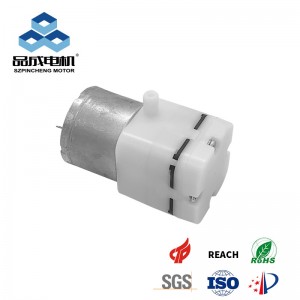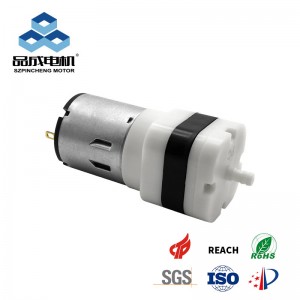Micro water pumps supplier
Yes, micro vacuum pumps are fully capable of supporting vacuum adsorption in food packaging, offering precision, efficiency, and compliance with stringent hygiene standards. These compact systems enable critical processes like air evacuation, sealing freshness, and securing products during automation. Below, we detail their technical viability, advantages, and industry-specific applications.
Technical Feasibility for Food Packaging
-
Oil-Free Operation:
Modern micro vacuum pumps (e.g., piston or diaphragm types) eliminate oil contamination risks. For instance, the DLT·HS140H piston pump uses oil-free technology, ensuring pure airflow for medical devices and food packaging13. This aligns with FDA/EC1935 standards for direct/indirect food contact. -
Precision Vacuum Control:
Pumps like the JP-140V achieve vacuum levels up to -700mmHg (≈93.3 kPa), ideal for delicate tasks like sealing fresh produce or sous-vide bags without crushing contents3. Adjustable pressure settings cater to diverse packaging needs, from fragile snacks to rigid trays. -
Compact Integration:
With sizes as small as 36×44×143mm (e.g., Skater’s PUM2 pump)6, micro vacuum pumps fit seamlessly into benchtop sealers, handheld devices, and automated lines—optimizing factory floor space.
Key Advantages in Food Applications
-
Extended Shelf Life: By removing 95–98% of oxygen10, these pumps inhibit microbial growth, keeping food fresh 5× longer than conventional methods (e.g., ZWILLING’s Fresh & Save system)4.
-
Energy Efficiency: Low-power models (e.g., 0.45kW DLT·HS140H) consume minimal electricity while maintaining flow rates up to 100L/min13.
-
Silent Operation: Noise levels as low as 58dB ensure suitability in noise-sensitive environments like labs or small-scale kitchens1.
-
Material Compatibility: Work seamlessly with embossed Mylar bags, plastic trays, and flexible pouches—enabling hermetic seals for liquids, powders, and solids8.
Industry-Specific Use Cases
-
Portable & Home Devices:
-
Rechargeable micro vacuum pumps (e.g., ZWILLING’s USB-powered pump) enable household vacuum sealing for meal prep or sous-vide cooking4.
-
Skater’s handheld pump pairs with Food Fresh Bags for compact food storage6.
-
-
Industrial Automation:
-
Integrated into tray sealers (e.g., FD-Z4 model) for high-speed packaging of meats, fruits, and ready meals—processing 1,330 trays/hour10.
-
Used in rotary vane pumps (e.g., XD-040) for bulk vacuum sealing in commercial facilities57.
-
-
Specialized Processing:
-
Vacuum marination, freeze-drying, and modified atmosphere packaging (MAP) leveraging pumps like the 2RB 730 with 500m³/h airflow9.
-
Selecting the Right Micro Vacuum Pump
Consider these criteria for food-grade compliance:
-
Certifications: NSF, EHEDG, or ISO 22000 compliance.
-
Material Safety: Stainless steel or corrosion-resistant alloys (e.g., Yufeng 2RB 730’s food-contact surfaces)9.
-
Performance Metrics:
-
Flow rate: ≥45 L/min for small-scale systems3.
-
Ultimate vacuum: ≤-700mmHg for robust oxygen evacuation.
-
-
Ease of Maintenance: Self-lubricating designs or tool-free cleaning (e.g., JP-140V’s accessible filters)3.
Conclusion
Micro vacuum pumps are indispensable in food packaging, delivering oil-free, efficient, and scalable vacuum adsorption. From household kitchens to industrial lines, their adaptability ensures extended freshness, reduced waste, and compliance with global safety standards. For manufacturers, highlighting technical specs (vacuum depth, flow rate), certifications, and use-case versatility on product pages will boost SEO visibility for keywords like “micro vacuum pump for food packaging” or “oil-free vacuum sealer pump”.
Pro Tip: Embed schema markup for “Product” and “FAQ” (e.g., “Can micro vacuum pumps handle liquids?”) to enhance rich snippets in Google Search results
you like also all
Read More News
Post time: Jul-01-2025




